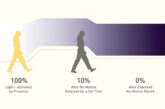
Gary Parker, ECA Technical Manager, gives an overview of the codes that make up those all-important Electrical Installation Condition Reports.
ECA’s technical experts are often quizzed by members about the coding on electrical installation condition reports (EICRs). Most commonly, we’re asked about which codes should be applied to specific faults during inspections of existing electrical installations.
A huge number of factors can impact an inspector’s decision-making process when drawing up an EICR, so it’s no wonder they can sometimes be a source of confusion. For a deeper dive into the rationale behind the different codes when undertaking an EICR, read on…
Who decides what codes to assign?
The inspector is the only person who can make an informed decision about what code is suitable in any given situation. This is because they’re on-site and can see any defects first-hand, and therefore make an informed call on how safe an installation is. As an aside, it’s important to note that any item raised should be set against the requirements of the Wiring Regulations (BS 7671:2018) – not against the inspector’s personal judgement.
Is it a type of risk assessment?
Indeed it is. When considering what code is relevant to any given situation, the inspector needs to consider the environment and the potential risk of damage or injury. So, simply saying that scenario ‘x’ results in outcome ‘y’ isn’t always suitable. A nuanced decision-making process is required.
To do this, we must first look at what the codes actually mean:
C1: Danger present. Risk of injury. Immediate remedial action required.
In this scenario, there is an immediate danger of shock or fire to persons, property or livestock.
C2: Potentially dangerous – urgent remedial action required.
In this scenario, there is a fault that could potentially become dangerous (a hazard), but another fault or foreseeable action must occur in order for danger to arise.
C3: Improvement recommended. In this scenario, there is a defect against BS 7671, but it doesn’t present any immediate or potential danger to people or property.
FI: Further investigation required without delay.
In this scenario there is an electrical issue, but additional time is required to ascertain what this is.
Decisions, decisions
The ‘decision’ tree for selecting an appropriate code during an EICR (the concept of which, we’re about to explain) expands this further.
Codes with consequences
It’s extremely important to understand the consequences of any code raised during an EICR. For instance, both a C1 and C2 result in an ‘unsatisfactory’ outcome. Therefore, overzealous use of these codes can potentially cause unwarranted disruption to the client, their building and possibly their business.
An example: if an installation is found to be lacking RCD protection for socket outlets, most guidance would recommend a C3 code. Should a contractor decide to instead raise a C2, then the client could be looking at a significant cost or inconvenience. Of course, BS 7671 does not account for cost, and cost most certainly should not dictate decisions concerning electrical safety.
But the implications of getting a code wrong, whichever way it may be, can be evidently significant. Additionally, an inspector should not reduce a code from a more serious to a lesser code just because it is the whim of the client. The inspector has been employed as an expert in electrical safety and shouldn’t let their decisions become compromised by any external influence.
It’s essential that the inspector be well-versed in the requirements of the latest version of the Wiring Regulations and offer appropriate codes for each defect. If need be, before raising a coded item, the inspector should always be in a position to reference a BS 7671 Regulation number on the issue, if challenged. Where further investigation is required, this will also result in an unsatisfactory report as the inspector has highlighted a safety issue, but requires additional time to clarify the details.
Only defects against BS 7671 should be recorded The EICR is aimed specifically at defects against the requirements of BS 7671. The inspector shouldn’t raise a code against defects noticed against other British Standards, however they’re at liberty to raise comments or notes about other issues or defects and inform the client.
Take, for example, defective emergency light fittings. If they don’t present any electrical hazard to the user, then they’re effectively safe and therefore shouldn’t appear as a coded item on an EICR. However, this scenario may show a departure from BS 5266 and, in this case, it may be useful to inform the client of this situation on a separate document.
The final decision
Of course, guidance material can’t take the place of the skill, knowledge and experience of the inspector. The ultimate decision is down to them. The recognised industry guidance is there, but only as a guide, and it can certainly be deviated from should the inspector be able to suitably argue the reasons for it.
Get more technical support and guidance from the ECA by clicking here









